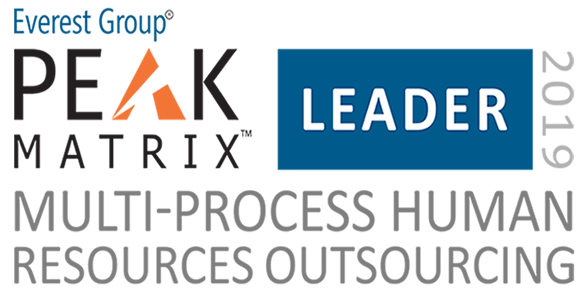
COVID changed the way the world thinks about work. It’s prompted shared services leaders to embrace new ways of working.
Fresh ideas and technology developments — from digital channels to intelligent automation — are inspiring and shaping the new future of work.
HR shared services centres (HRSSCs) are now looking beyond the three Ps of process, policy and payroll, but the pace of change is faster than most can keep up. Traditional shared services making do with complex systems and old technology are failing. Their time is running out.
Companies need to be agile and prepared for any change, whether that change is growth or expansion into new markets. Business continuity and operationalisation are now key to any successful growth strategy.
According to The agile HR challenge in APAC, “Those (companies) who are not agile risk being left behind. 71% of organizations use agile approaches across the board. 98% of those see some form of success.”1
What can payroll technologies do for me?
The function of any payroll solution is to ensure that your employees can be set up rapidly and paid accurately and on time, every time. Payroll is complicated. It varies from country to country and although most employees only really worry if they’re underpaid, it comes under regular scrutiny from authorities. Mistakes, either from technologies or people using them, can lead to employee frustration, publicity and costly fines.
The best payroll solutions will free up time and give you complete peace of mind. They’ll take care of everything from calculations to multi-currency deposits, tax remittances to regulatory changes, all the while maintaining total compliance wherever you operate. They’ll also bring transparency, give fast access to employee data, allow customisable reports, and help improve security.
A fully integrated HR suite brings together payroll and other HR functions, including HR admin, time management, talent management, and data reporting and analysis. Sharing information across functions makes for more accurate data, greater efficiency, and better decision-making, which allow HR to become an important contributor to organisational growth.
Adapting to the new world of work
COVID changed the way the world thinks about work. And nowhere more so than Asia, the world’s most diverse geographical region considering culture, technology adoption and maturity, and varying levels of market development.
HR leaders had to rapidly pivot their shared service operating model so that it could continue to support both employers and employees.
The very definition of outsourcing and its delivery changed. Companies were compelled to build more robust redundancy plans. Leaders assessed distributed outsourcing, came to terms with remote working, reduced reliance on single-point locations and introduced ‘follow-the-clock’ models with dispersed teams across multiple time zones.
The new model of HR shared services is less inward-looking, more integrated and better able to scale. All essential attributes for a region as diverse as Asia-Pacific, where economic conditions vary (4.2% growth in Vietnam compared to 9.5% contraction in the Philippines).2
HR shared services have had to pivot into Centres of Excellence that embrace new best practices. The most successful have adopted hyper-resilient operating models, based on working with selective, expert external partners. They’ve also harnessed the very latest in digital technologies and intelligent automation (IA), freeing up their workforce to develop the analytical, technical, business and commercial skills required for the new world of work. Many successful companies have moved to hub 'n' spoke working environments supported by a one-office HRSSC model that includes outsourcing. According to Deloitte’s 2021 research, ~65% of successful organisations include shared services and outsourcing in their delivery model.3
New virtual shared services have emerged, supporting a hybrid approach of virtual, remote and onsite working that many companies will follow.
This new model of shared services will provide the support that a modern workforce needs to succeed. Add this to the features that already make Southeast Asia attractive to multinationals seeking growth —more than half of the population aged under 30; a young, skilled workforce;4 a stable, business-friendly environment; multi-lingual capabilities; and thriving tech start-ups including 17 unicorns. ASEAN’s future looks promising.
Why change had to come — a warning from payroll
COVID-19 has turned business operations upside down across the board, but perhaps none more so than payroll teams.
Statistics around payroll accuracy and availability of workforce data are sobering reading. Globally, 60% of employees say they’ve been underpaid at some time, with 20% saying this happens often.5 While pay inaccuracies were recorded across the world, APAC is the worst-performing geography.
Inability to work real time based on a single source of truth is forcing many companies to face spiralling costs associated with multiple systems compliance, operational vulnerabilities related to resource effort required, and inability to scale to meet mid-term business requirements and future growth strategies.
Almost a year into the pandemic, when businesses were affected by furloughs, part-time and flexible working, and really needed to know what was going on with their workforce, 73% of the world’s payroll leaders didn’t have the payroll data necessary to inform the strategic direction of the company.6
According to John Antos, VP of Strategy at ADP, “Workforce costs for some businesses can account for up to 60% of total business costs, yet ADP’s research shows only 27% of financial leaders consider payroll data when developing their commercial and growth strategies.”7
“Equally concerning, nearly a third (30%) of finance and HR leaders are not confident that their payroll system can support their plans for growth or geographical expansion,” said Antos.
Shared services are more powerful with shared data
HR shared services that put payroll at core of their growth strategies are succeeding. In a world where data is vitally important, bringing payroll and HR data together yields a huge amount of reliable data that’s checked and updated during every payroll run, enabling payroll-forward companies to use analytics, make informed decisions and control otherwise hidden costs.
Rather than disparate systems and multiple databases that may cause errors and confusion, unified payroll and HR coalesces around a single source of truth, providing organisation-wide visibility and data that can easily be shared.
Bringing payroll and HR together will also reduce costs, streamline processes, ease compliance and help manage everything from onboarding to time recording.
If you’re a multinational hoping to succeed in ASEAN, you need the right kind of HRSCC, with the latest technology and access to a worker pool with expert local regulatory knowledge. Without it, you’ll face the same pitfalls when expanding or driving growth in such a diverse and challenging region.
To talk to an expert about your HR shared services model, contact us.
1 Hrexchangenetwork.com
2 Economics.rabobank.com
3 2021 Global Shared Services Report, Deloitte
4 UOBgroup.com
5 People at Work 2021: A Global Workforce View, ADP Research Institute
6 Global Payroll Survey, ADP
7 Hrmasia.com


